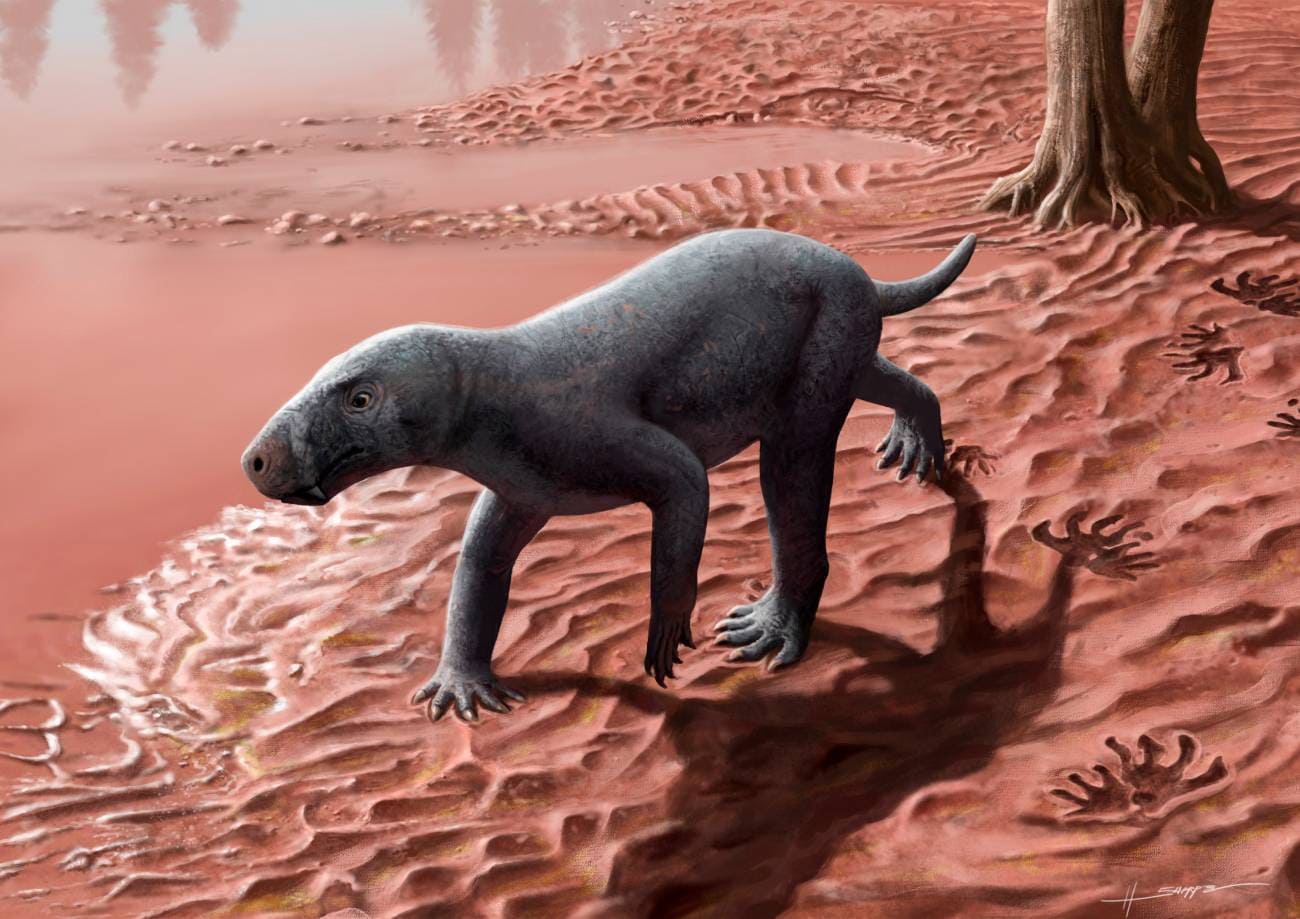The oldest ancestor of mammals was a gorgonopsian and has recently been described thanks fossils discovered on the island of Mallorca and that they belong to a time when it was part of the supercontinent Pangea.
An international research team led by the Institut Català de Paleontologia Miquel Crusafont and the Museu Balear de Ciències Naturals has analyzed a fossil animal that lived in modern-day Mallorca between 270 and 280 million years ago. He find is exceptionalnot only because of the amount of fossil remains contained therein, but also because it is the oldest gorgonopsian on the known planet.
The group of gorgonopsians
Loose Gorgonopsians are an extinct group of synapsids. who lived between 270 and 250 million years ago during the Permian. They belong to the evolutionary line that will produce the first mammals 50 million years later.
Were warm-blooded animals such as modern mammalsbut unlike most of these they laid eggs. They were carnivores and were the first animals to develop the characteristic saber teeth. They were often the main predators of the ecosystems they lived in and their appearance resembled that of a dog, but without ears or hair.
The remains found in Mallorca belong to a small to medium sized animalabout one meter long, and from a location in the municipality of Banyalbufar (Serra de Tramuntana, Mallorca). It was excavated in three different campaigns, during which a large amount of material was recovered.
“The large number of bone remains is surprising. We found everything from skull fragments, vertebrae, ribs to a very well preserved femur. When we started this dig, we never thought we would find so many remains of an animal of this type in Mallorca”explains Rafel Matamales, curator of the Museu Balear de Ciències Naturals (MUCBO | MBCN), associate researcher at the ICP and first signatory of the article.
Its location on the Balearic Islands is in itself an unusual fact. The known remains of gorgonopsians Before the discovery, they belonged to very high latitudes such as Russia or South Africa. Its age also surprised the researchers who developed the study.
“It is most likely the oldest gorgonopsian in the world. At least the one we found in Mallorca has that 270 million years and the other data from this group worldwide are slightly younger,” says Josep Fortuny, senior author of the paper and head of the Computational Biomechanics and Evolution of Life History group at the Institut Català de Paleontologia Miquel Crusafont (ICP).
Among the excavated fossil remains, an almost complete leg stands out, making it possible to study how the animal moved. Unlike reptiles, which have a more ancestral locomotion with their legs spread further apart, Gorgonopsians had their legs arranged more vertically and therefore they moved in a manner which would be half way between that of reptiles and that of mammals. This system is more efficient when walking and especially when running.
The recovered saber teeth confirm their diet. “We know it is a carnivorous animal, a characteristic that gorgonopsians share all over the world. Saber teeth are a common feature in large predators of the ecosystemsand the one we found was certainly in the environment in which it lived,” emphasizes Àngel Galobart, ICP researcher and director of the Conca Dellà Museum.
Mallorca continental
During the Permian, about 270 million years ago, Mallorca was not an island, but an island It was part of the supercontinent Pangea. It was located at an equatorial latitude, where today you can find countries like Congo or Guinea. The climate was monsoonal, with wet seasons alternating with very dry seasons.
It is believed that the place where the fossils were found was a floodplain with temporary pools where gorgonopsians and the rest of the fauna watered. Under the animals that lived together in this ecosystem Moradisaurine captorhinids are found, an ancient group of herbivorous reptiles to which the well-known Tramuntanasaurus tiai belongs, which may have been part of the diet of the gorgonopsians.
Despite the small area they occupy, the Balearic Islands have an exceptional fossil record. The most studied and known fossils are those from the Pleistocene and Holocene. However, the fossils from other periods are much less known.
In this one islands, more than 1,000 remarkable fossils have been foundsuch as the ancestors of horses and hippos, large coral reefs, the oldest mosquito in the world, giant sharks and almost a thousand species of ammonoids, cephalopods related to today’s squid.

